Abstract
A study of community awareness of mosquitos and related subjects in the residential areas of two Tanzanian cities (Dar es Salaam and Tanga) showed that residents were well aware of mosquitos. Almost all claimed to use some form of domestic mosquito control product for their personal protection, and many spend a significant portion of the household income on this. The problems of nuisance-biting and malaria transmission are usually not separated and are considered to be the result of poor environmental hygiene, for which both residents and local authorities are responsible. Although Culex mosquitos are not a primary target of the Urban Malaria Control Project (UMCP), the persistence of nuisance-biting has made residents sceptical and dissatisfied with insecticide spraying. The residents' priorities are evidently not the same as those of the health authorities, yet mutual cooperation is essential. In order to maintain community support, campaigns aimed at malaria vectors should consider the need for additional measures to control Culex mosquitos, such as those now being tried by the UMCP. Mosquito breeding sites are non-specifically associated with rubbish and standing water of all kinds, and so the actions that the community considers necessary for mosquito source reduction tend to be poorly targeted. Residents do not recognize that some sources produce malaria mosquitos while others produce nuisance mosquitos. The environmental anti-mosquito measures currently promoted by health education and other forms of propaganda are also poorly targeted. While some of them are directed at important Culex breeding sites, others are aimed at sites of little importance for mosquitos of any kind.(ABSTRACT TRUNCATED AT 250 WORDS)
Full text
PDF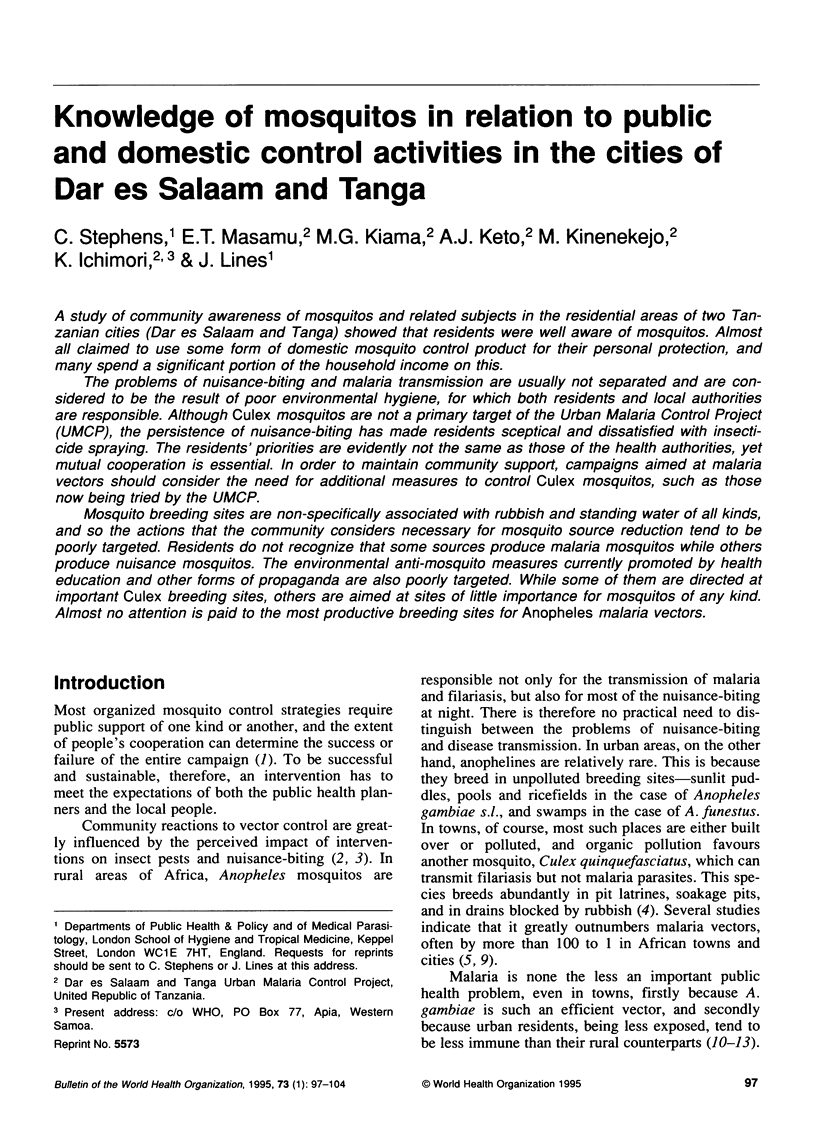
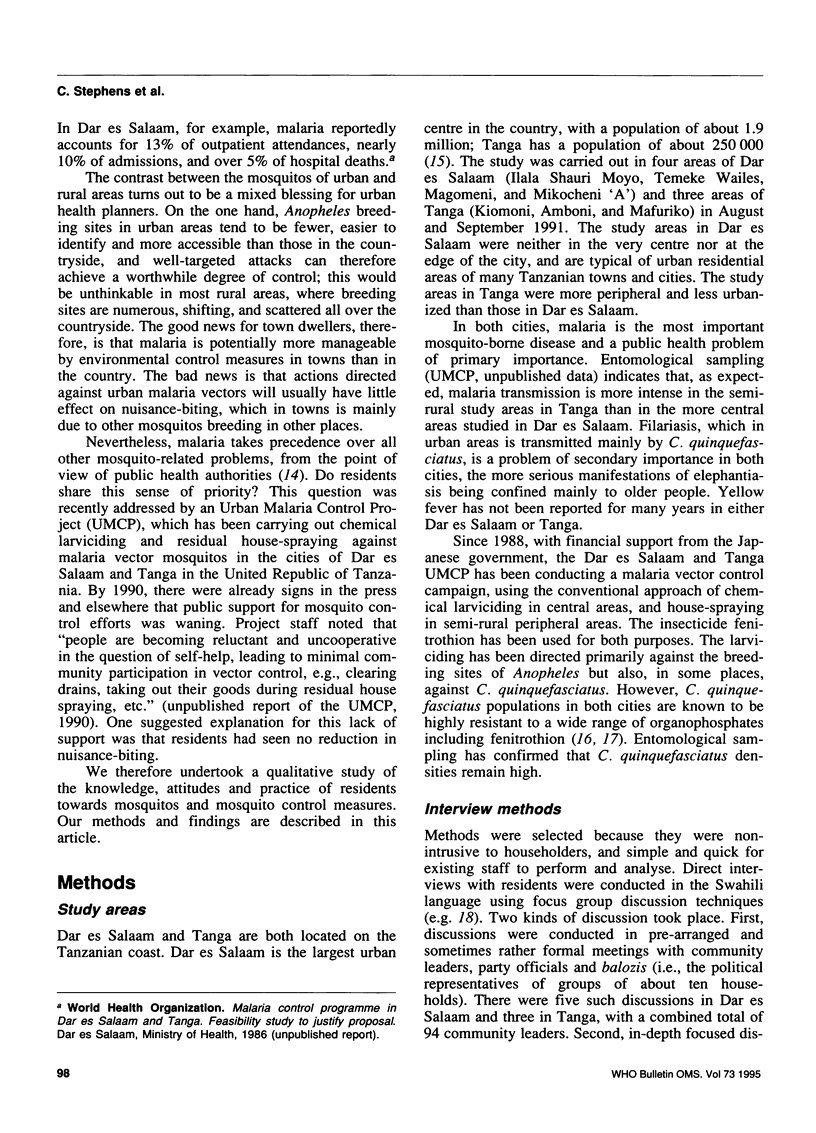
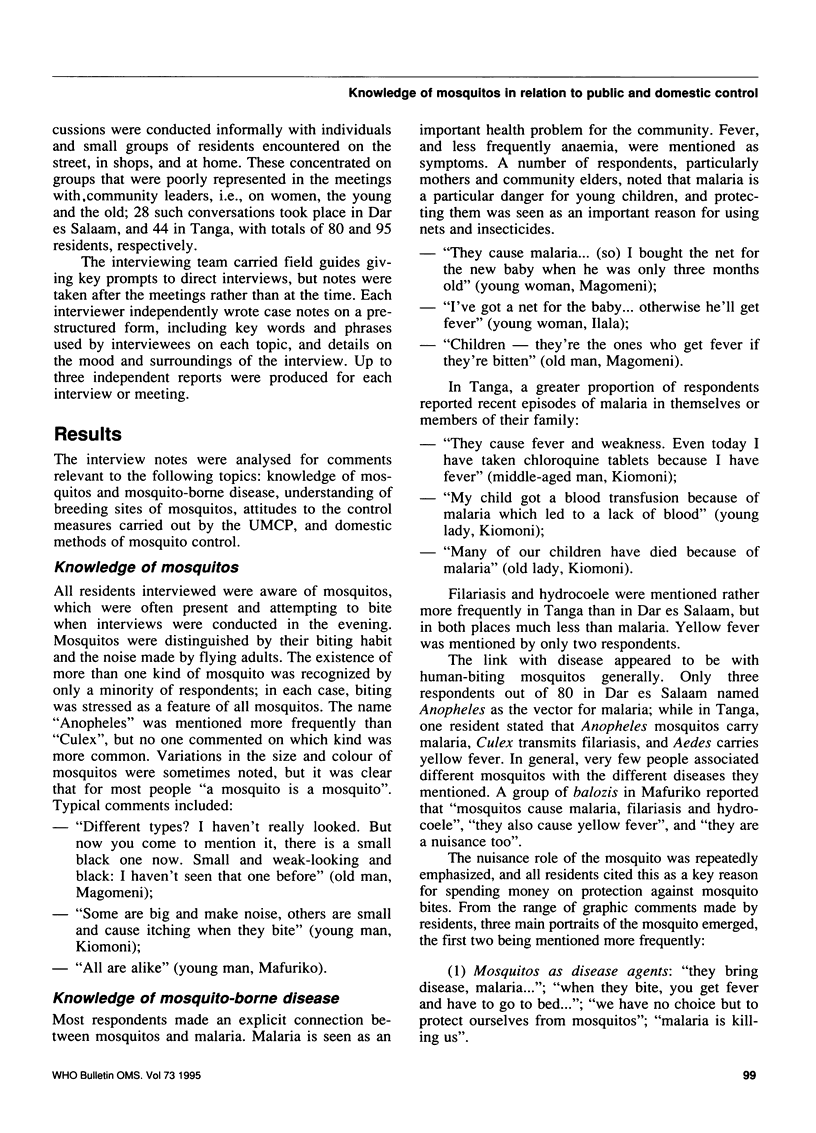
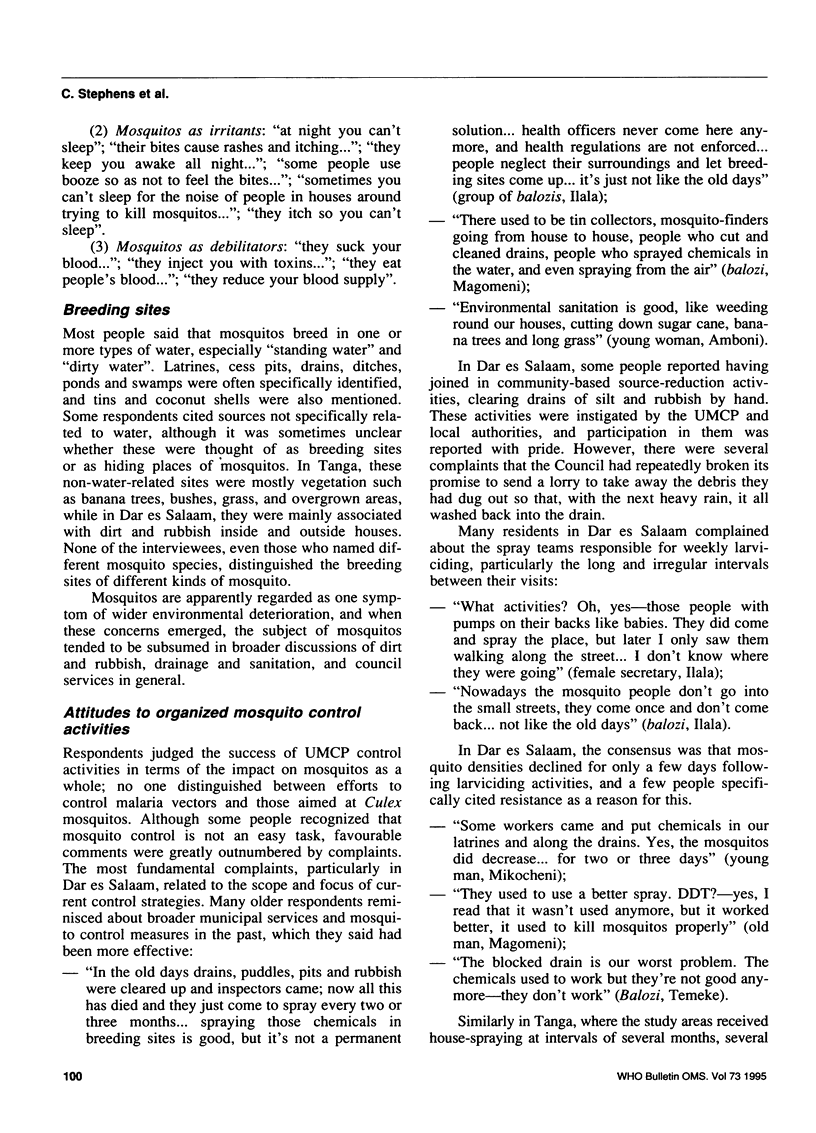
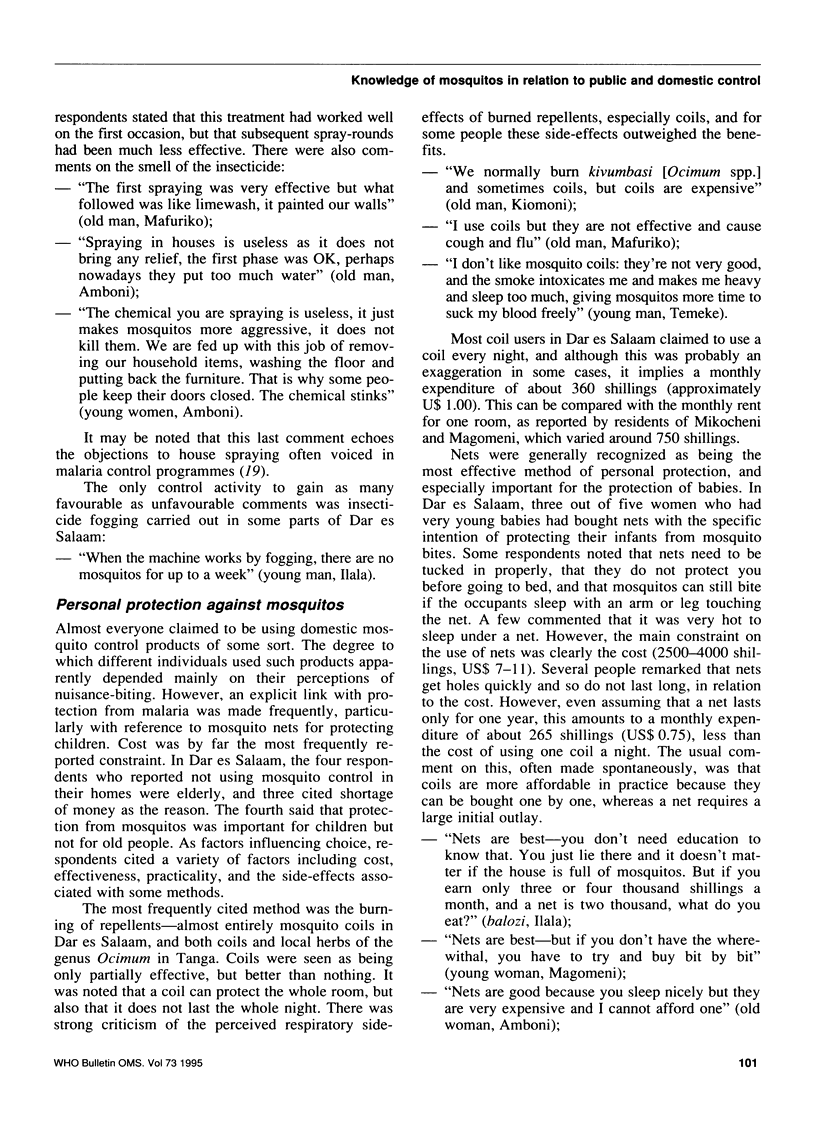
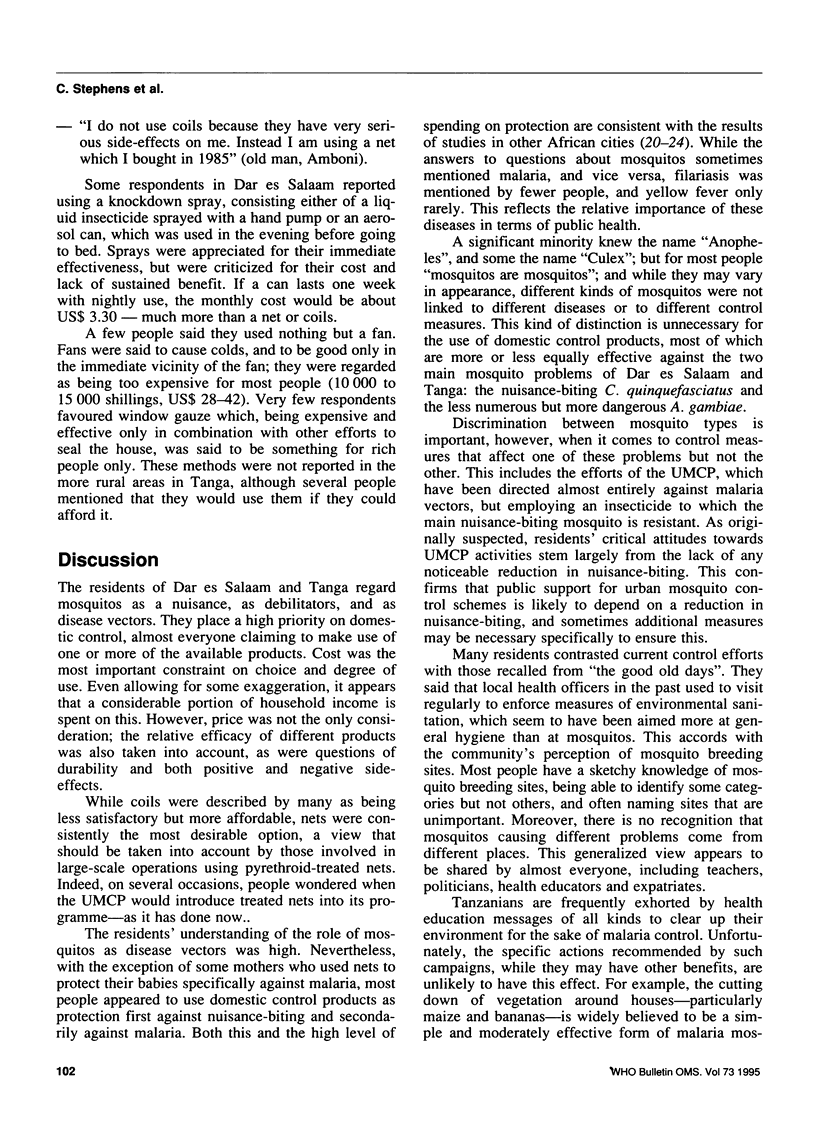
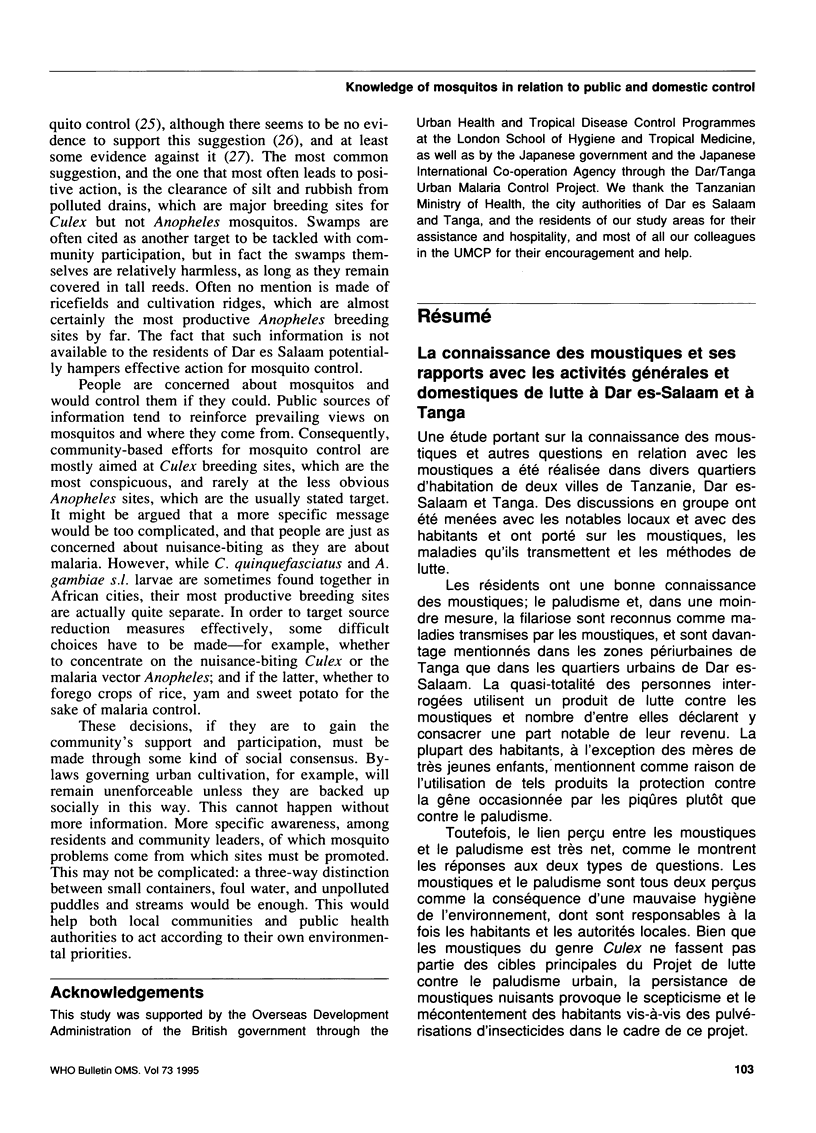
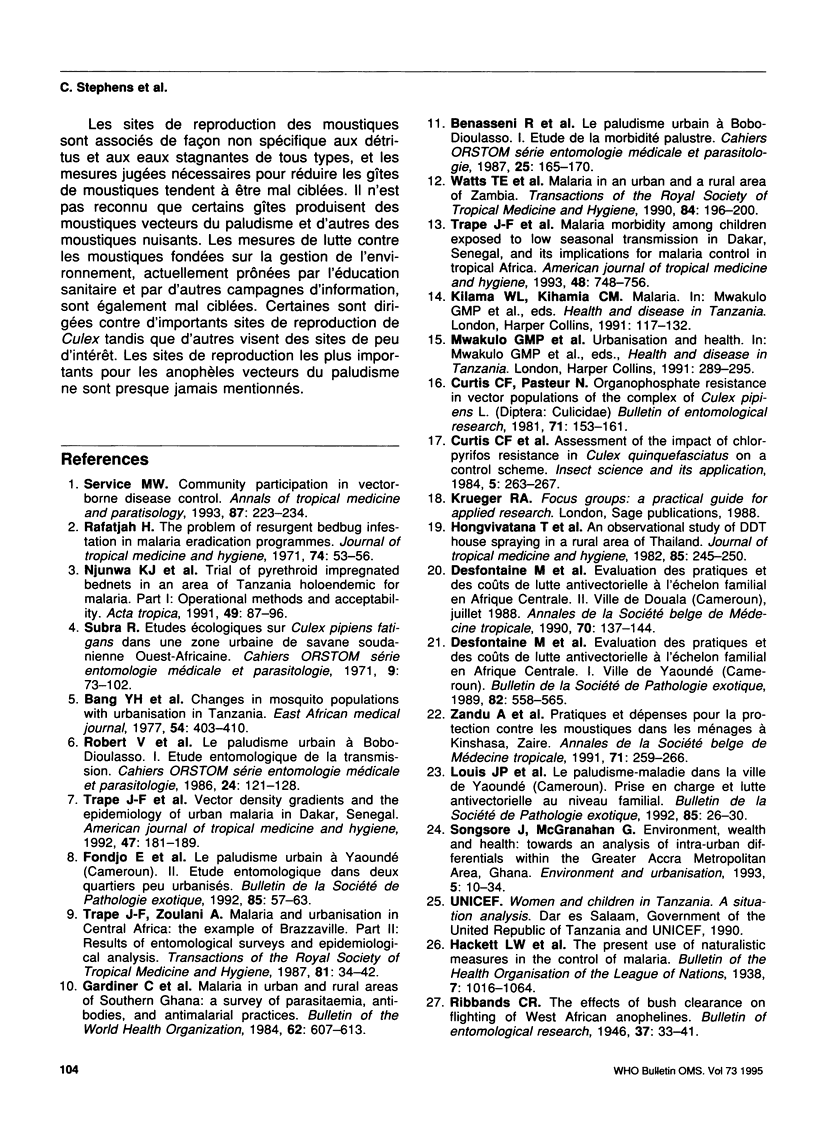
Selected References
These references are in PubMed. This may not be the complete list of references from this article.
- Bang Y. H., Mrope F. M., Sabuni I. B. Changes in mosquito populations associated with urbanization in Tanzania. East Afr Med J. 1977 Jul;54(7):403–410. [PubMed] [Google Scholar]
- Desfontaine M., Gelas H., Cabon H., Goghomou A., Kouka Bemba D., Carnevale P. Evaluation des pratiques et des coûts de lutte antivectorielle à l'échelon familial en Afrique centrale. II. Ville de Douala (Cameroun), juillet 1988. Ann Soc Belg Med Trop. 1990 Jun;70(2):137–144. [PubMed] [Google Scholar]
- Fondjo E., Robert V., Le Goff G., Toto J. C., Carnevale P. Le paludisme urbain a Yaoundé (Cameroun). 2.--Etude entomologique dans deux quartiers peu urbanisés. Bull Soc Pathol Exot. 1992;85(1):57–63. [PubMed] [Google Scholar]
- Gardiner C., Biggar R. J., Collins W. E., Nkrumah F. K. Malaria in urban and rural areas of southern Ghana: a survey of parasitaemia, antibodies, and antimalarial practices. Bull World Health Organ. 1984;62(4):607–613. [PMC free article] [PubMed] [Google Scholar]
- Hongvivatana T., Leerapan P., Smithisampan M. An observational study of DDT house spraying in a rural area of Thailand. J Trop Med Hyg. 1982 Dec;85(6):245–250. [PubMed] [Google Scholar]
- Louis J. P., Trebucq A., Gelas H., Fondjo E., Manga L., Toto J. C., Carnevale P. Le paludisme-maladie dans la ville de Yaoundé (Cameroun). Prise en charge et lutte antivectorielle au niveau familial. Bull Soc Pathol Exot. 1992;85(1):26–30. [PubMed] [Google Scholar]
- Rafatjah H. The problem of resurgent bed-bug infestation in malaria eradication programmes. J Trop Med Hyg. 1971 Feb;74(2):53–56. [PubMed] [Google Scholar]
- Trape J. F., Lefebvre-Zante E., Legros F., Druilhe P., Rogier C., Bouganali H., Salem G. Malaria morbidity among children exposed to low seasonal transmission in Dakar, Senegal and its implications for malaria control in tropical Africa. Am J Trop Med Hyg. 1993 Jun;48(6):748–756. doi: 10.4269/ajtmh.1993.48.748. [DOI] [PubMed] [Google Scholar]
- Trape J. F., Lefebvre-Zante E., Legros F., Ndiaye G., Bouganali H., Druilhe P., Salem G. Vector density gradients and the epidemiology of urban malaria in Dakar, Senegal. Am J Trop Med Hyg. 1992 Aug;47(2):181–189. doi: 10.4269/ajtmh.1992.47.181. [DOI] [PubMed] [Google Scholar]
- Trape J. F., Quinet M. C., Nzingoula S., Senga P., Tchichelle F., Carme B., Candito D., Mayanda H., Zoulani A. Malaria and urbanization in central Africa: the example of Brazzaville. Part V: Pernicious attacks and mortality. Trans R Soc Trop Med Hyg. 1987;81 (Suppl 2):34–42. doi: 10.1016/0035-9203(87)90475-5. [DOI] [PubMed] [Google Scholar]
- Zandu A., Malengreau M., Wéry M. Pratiques et dépenses pour la protection contre les moustiques dans les ménages à Kinshasa, Zaïre. Ann Soc Belg Med Trop. 1991 Dec;71(4):259–266. [PubMed] [Google Scholar]


